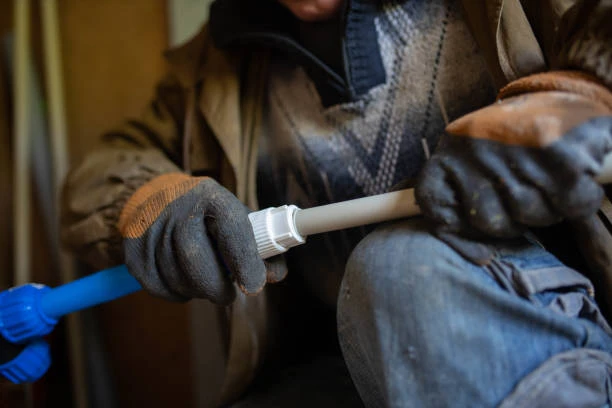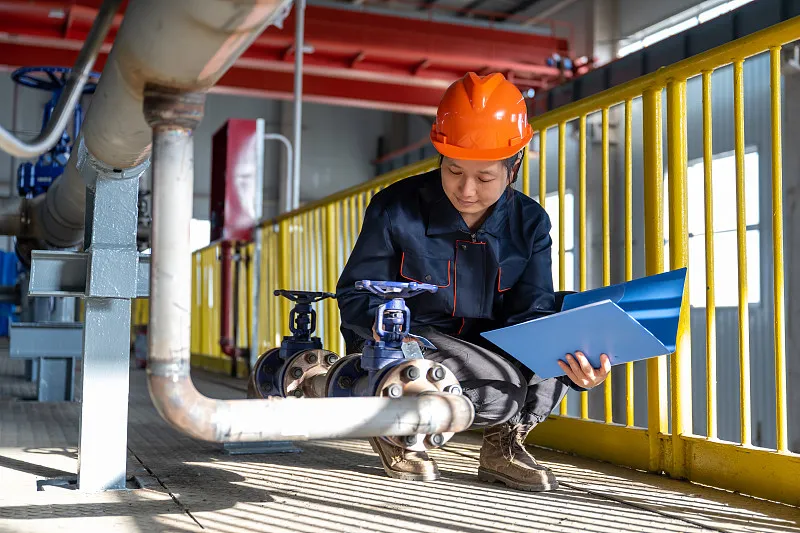Subtitle: Vietnam Plastic Pipe and Fittings Market Sees Rapid Growth Amid Rising Demand in Infrastructure and Construction
The plastic pipe and fittings market in Vietnam is experiencing significant growth. As the country develops its infrastructure and urbanization progresses, the demand for reliable and cost-effective plumbing solutions rises. Plastic pipes, particularly those made from materials like PVC, HDPE, and PPR, are being increasingly used in various sectors including residential, commercial, and industrial plumbing.
This article delves into the factors driving the growth of the Vietnam plastic pipe and fittings market, the market’s current size, and its future prospects. It also explores the demand trends, technological advancements, and challenges faced by manufacturers in this expanding market.
Introduction: An Overview of the Vietnam Plastic Pipe Market
Vietnam plastic pipe and fittings market is becoming one of the fastest-growing sectors in the country’s construction and infrastructure industries. Over the past few years, the increasing demand for plastic pipes has been fueled by urbanization, rising construction activities, and industrialization. As plastic pipes are lightweight, corrosion-resistant, and cost-effective, they have become the preferred choice for modern plumbing systems.
The growth of the Vietnam plastic pipe and fittings market is linked to both domestic demand and international trade. The market is seeing an influx of new manufacturing technologies and an increasing number of local and international players entering the space. The government’s focus on improving infrastructure and utilities also plays a key role in boosting market demand.
Market Drivers: Factors Fueling the Growth of Plastic Pipe and Fittings in Vietnam
The Vietnam plastic pipe and fittings market is experiencing growth due to several key drivers. These factors include rapid urbanization, a booming construction industry, and increasing investments in infrastructure development.
1. Urbanization and Population Growth
Vietnam’s population is growing at a steady pace, and its urbanization rate is increasing. Cities like Ho Chi Minh City and Hanoi are expanding, creating a need for robust plumbing systems. This has led to a surge in demand for plastic pipes and fittings for both residential and commercial construction projects. With urbanization comes a growing need for water supply, sanitation systems, and stormwater drainage, all of which rely on reliable piping solutions.
Plastic pipes, particularly PVC and HDPE, are ideal for urban infrastructure projects because they are resistant to corrosion, light in weight, and durable under various environmental conditions. These properties make plastic pipes the material of choice for both new construction and pipeline rehabilitation projects.
2. Government Initiatives in Infrastructure Development
The Vietnamese government has committed to significant investments in infrastructure, particularly in water and wastewater management. These investments are contributing to the rising demand for plastic pipes and fittings. Large-scale projects in water treatment, irrigation, sewage, and drainage are driving the growth of the plastic pipe market.
Government policies that support urban development and improved infrastructure are expected to continue to boost demand for plastic pipes. The government’s focus on enhancing the standard of living by improving water supply and sanitation systems plays a crucial role in the expansion of the market.
3. Cost-Effectiveness and Durability of Plastic Pipes
Plastic pipes offer several advantages over traditional materials like steel and concrete. Their lightweight nature makes them easy to transport and install, reducing overall construction costs. Additionally, plastic pipes are resistant to corrosion, scale build-up, and chemical reactions, which significantly extends their lifespan and reduces maintenance needs.
PVC and HDPE pipes, for example, can last for decades, making them a long-term solution for plumbing and drainage systems. The durability and cost-effectiveness of plastic pipes have made them increasingly popular among construction professionals and contractors in Vietnam.
Types of Plastic Pipes in Vietnam Market
The Vietnam plastic pipe market includes a variety of plastic pipe materials. Each type has unique features that make it suitable for different applications. The three most commonly used types of plastic pipes in Vietnam are PVC, HDPE, and PPR.
1. PVC Pipes
Polyvinyl chloride (PVC) pipes are widely used in Vietnam for water supply and drainage systems. PVC is a popular choice because of its low cost, ease of installation, and resistance to corrosion. PVC pipes are commonly used in both residential and commercial plumbing systems, particularly for cold-water applications. Their ability to handle high pressure and their durability in harsh conditions make them ideal for use in urban infrastructure projects.
2. HDPE Pipes
High-Density Polyethylene (HDPE) pipes are gaining popularity due to their superior flexibility, chemical resistance, and long-lasting performance. HDPE pipes are primarily used in gas, water, and sewer lines. In Vietnam, HDPE pipes are particularly suitable for areas prone to earthquakes or areas with shifting soil. They are also used in agricultural irrigation systems and industrial applications, offering excellent resistance to UV radiation and chemicals.
3. PPR Pipes
Polypropylene Random Copolymer (PPR) pipes are increasingly being used for hot and cold water supply systems. PPR pipes are highly resistant to high temperatures and pressures, making them ideal for residential and commercial hot water systems. They are also more durable than PVC pipes in certain conditions and have excellent resistance to chemical degradation.
Technological Advancements in Plastic Pipe Manufacturing
As demand for plastic pipes increases in Vietnam, manufacturers are adopting new technologies to improve production efficiency and product quality. Technological advancements in the production process have enhanced the performance of plastic pipes, making them more durable, flexible, and easier to install.
1. Advances in Pipe Extrusion Technology
Recent advancements in pipe extrusion technology have made it possible to produce high-quality plastic pipes at a faster rate. Manufacturers are investing in state-of-the-art extrusion machines that allow for more precise control over the pipe’s thickness, surface finish, and material consistency. This results in stronger and more reliable pipes, which are essential for modern plumbing systems.
2. Improved Pipe Fusion Techniques
Pipe fusion techniques, such as electrofusion and butt fusion, have also advanced. These methods are used to join plastic pipes, ensuring a leak-proof and durable connection. Fusion welding technology eliminates the need for traditional welding or threading, reducing the potential for human error and ensuring the integrity of the pipeline system.

Challenges in the Vietnam Plastic Pipe and Fittings Market
While the plastic pipe market in Vietnam is growing rapidly, it faces several challenges. These challenges include competition from other materials, regulatory hurdles, and issues related to waste management.
1. Competition from Other Materials
Plastic pipes face competition from other materials such as steel, concrete, and copper. While plastic offers several advantages, some applications still require the strength and rigidity of steel or the antimicrobial properties of copper. The challenge for plastic pipe manufacturers is to ensure that their products can meet the performance standards required for more demanding applications.
2. Regulatory Challenges
The plastic pipe industry in Vietnam is subject to local and international regulations regarding manufacturing, product standards, and environmental impact. The Vietnamese government has stringent requirements for plumbing materials, and manufacturers must ensure that their products comply with these standards. This adds complexity and cost to the manufacturing process and can delay product launches.
3. Waste Management and Recycling Issues
The issue of plastic waste is a growing concern, and plastic pipes are no exception. While plastic pipes are durable and long-lasting, they pose a significant challenge at the end of their life cycle. PVC and other plastic materials are difficult to recycle and often end up in landfills. The plastic pipe industry needs to invest in better recycling technologies and develop more sustainable practices to address these concerns.
Future Outlook for the Vietnam Plastic Pipe and Fittings Market
The future of the Vietnam plastic pipe and fittings market looks promising. With continued growth in urbanization, infrastructure development, and industrialization, demand for plastic pipes will remain strong. Technological innovations in pipe manufacturing and improvements in recycling practices will further boost the market’s growth potential.
The Vietnam government’s ongoing infrastructure projects, including water treatment plants, sewage systems, and irrigation networks, will continue to drive demand for plastic piping solutions. As the construction industry expands and new residential and commercial developments emerge, plastic pipes will play a crucial role in the country’s plumbing infrastructure.
Conclusion: A Thriving Market with Growing Demand
The Vietnam plastic pipe and fittings market is experiencing strong growth, driven by the country’s expanding infrastructure and urbanization. PVC, HDPE, and PPR pipes are increasingly used in residential, commercial, and industrial applications. Technological advancements in pipe manufacturing and fusion techniques are improving product quality and efficiency. While challenges such as competition and waste management exist, the market’s future remains optimistic, with sustained demand expected for plastic pipes in the years to come.
Frequently Asked Questions (FAQs)
- Why are plastic pipes so popular in Vietnam?
Plastic pipes are cost-effective, durable, lightweight, and resistant to corrosion, making them ideal for urban and industrial plumbing. - What are the most commonly used types of plastic pipes in Vietnam?
PVC, HDPE, and PPR pipes are the most commonly used in Vietnam, with each type serving specific applications. - What factors are driving the growth of the plastic pipe market in Vietnam?
Urbanization, infrastructure development, population growth, and government investments in utilities are key drivers of market growth. - What are the challenges facing the Vietnam plastic pipe industry?
Challenges include competition from other materials, regulatory compliance, and plastic waste disposal issues. - What is the future outlook for the plastic pipe market in Vietnam?
The market is expected to grow steadily, driven by continued infrastructure development, urban expansion, and advancements in plastic pipe technology.


















